No products in the cart.
Return To Shop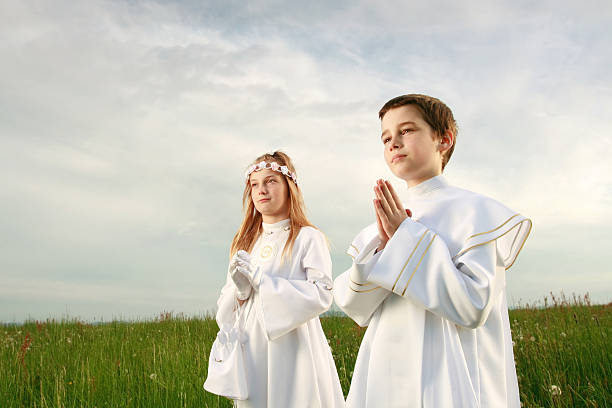
For centuries, alter server have brought an added sense of respect and beauty to church ceremonies. Their clothing isn’t just practical; it holds deep symbolic meaning. Each piece they wear, like the surplice and cassock, represents dedication and spiritual service.
These garments are carefully designed, with specific patterns, colors, and styles chosen to reflect the sacred role of altar servers. In this article, we’ll look at the key designs and patterns of altar server vestments.
From the simplicity of the surplice to the formal look of the cassock, each piece tells its own story and adds to the beauty of the liturgy. Join us as we explore what makes these vestments special, meaningful, and rich in tradition.
The Essential Names and Pieces of Altar Server Vestments
Altar server vestments are more than just uniforms; they are an important part of the sacred rituals in Christian liturgies. That altar server robe helps distinguish the server black from the congregation, symbolizing their role in assisting the priest and participating in the service. Each vestment carries its significance and contributes to the beauty and reverence of the ceremony.
Here’s a closer look at the essential names and pieces of altar serving vestments:
Cassock
The cassock is a long, close-fitting robe worn by altar servers beneath their other vestments. Traditionally black, the cassock signifies humility and devotion. It serves as the base garment and is worn throughout the year. In some liturgical settings, clipart altar servers may wear a red cassock for special occasions like feast days or during seasons such as Pentecost, while white cassocks are used for festive occasions like Christmas or Easter.
Surplice
Worn over the cassock, the surplice is a loose-fitting, white tunic that extends to about knee-length with wide sleeves. This garment symbolizes purity and is most commonly worn by mass servers vestments. The surplice may feature simple designs, but some include lace or pleated edges for a more formal or decorative appearance, particularly on special occasions.
Cincture
The cincture is a cord or belt to secure the cassock at the waist. Typically made of white or sometimes in colors matching the liturgical season, the cincture adds both practicality and a neat appearance. In some traditions, the cincture may be braided or woven, giving it a more refined look.
Alb
While not always worn by altar servers, the alb is a full-length white garment similar to the surplice. Clergy typically wear it, but in some traditions, altar servers also wear it as part of their vestment set. The alb represents purity and is used in more formal liturgical settings, often during major feast days or high Mass.
Stole
The stole is a vestment worn by priests and deacons, but may occasionally be seen in special roles for catholic altar servers, particularly those in training or leading certain prayers. The stole is worn over the shoulders and signifies the authority of the clergy, often in ceremonial roles.
Together, these vestments form a cohesive look that helps altar service appear neat and dignified, reflecting the sacred nature of their role in worship. Each piece, from the cassock to the surplice, not only fulfills a functional purpose but also carries deep symbolic meaning in the context of Christian worship.
Exploring Cassock Patterns and Surplice Designs
Altar server vestments, including the cassock and surplice, are key garments that contribute to the reverence and solemnity of Christian worship.
Though their purpose remains consistent, the patterns and designs of these vestments can vary to reflect the season, the occasion, or the ceremonial importance of the service. Below, we dive into the various cassock patterns and surplice designs commonly worn by altar boy costume.
Altar Server Cassock Patterns
The cassock serves as the base garment worn by altar servers, usually under a surplice. While the cassock is traditionally black, variations in altar cloth colors and design reflect specific liturgical occasions or seasons. Though the style of the cassock remains relatively simple, subtle details or patterns can distinguish them, particularly for ceremonial use.
Black Cassock
Black cassocks are the most common, worn during regular services and representing humility and reverence. They are typically plain but may feature minimal design elements such as piping or button details along the collar or sleeves. The simplicity of black cassocks allows the altar server to blend seamlessly into the background, focusing attention on the liturgical action.
- Red Cassocks: Red cassocks are worn for special liturgical events, such as the celebration of martyrs, Pentecost, or Good Friday. Red symbolizes the blood of Christ and the Holy Spirit, making it especially significant during certain religious observances. These cassocks may have additional details, such as contrasting cuffs or buttons, which highlight the importance of the occasion.
- White Cassocks: White cassocks are typically reserved for festive occasions like Christmas and Easter. White represents purity, light, and joy. These cassocks may be decorated with fine trims or piping in gold or silver, emphasizing the celebratory nature of these special days in the church calendar.
- Patterned Cassocks: While most cassocks remain solid in color, some feature subtle patterns or textures in the fabric. These can include woven checks, faint tonal variations, or even embroidered details, often used for ceremonial purposes. Such patterns enhance the visual richness of the cassock without distracting from the solemnity of the service.
Altar Server Surplice Design
The surplice, worn over the cassock, is a key piece of the altar server’s attire. Traditionally white, the surplice symbolizes purity and humility. While the overall design remains simple, surplices can incorporate a variety of decorative features to suit the formality of the occasion.
- Plain Surplice: The most basic and common type of surplice is the plain version, which has a clean, simple hem with no additional embellishments. This style is suitable for regular services and offers a neat, respectful appearance without drawing attention away from the liturgical proceedings.
- Lace-Trimmed Surplice: For more formal occasions, lace-trimmed surplices add a touch of elegance and beauty. Lace can be found around the edges of the sleeves and hem, lending a delicate yet dignified appearance. Lace-trimmed surplices are often worn during high Mass, feast days, or special liturgies, where the need for a more refined look is desired.
- Pleated Surplice: Some surplices feature pleating, usually along the back or at the shoulders. This adds volume and structure to the garment, giving it a more formal and distinguished appearance. Pleated surplices are often chosen for significant services or ceremonial events where the altar server’s role is particularly important.
- Embroidered Surplice: Embroidered surplices are less common but are used for special liturgies and ceremonial occasions. Embroidery may include religious symbols like crosses, chalices, or other Christian motifs. The embroidery adds an artistic touch and is perfect for major feast days, weddings, or ordinations where visual beauty enhances the sacredness of the occasion.
Colors Worn by Altar Servers and Priests
The colors worn by altar servers and priests play a significant role in the liturgy, symbolizing various aspects of the Christian faith, the seasons of the Church calendar, and the specific occasion of the service. While both altar servers and priests wear different types of vestments, the colors are carefully chosen to reflect the tone and theme of the celebration. Here’s a look at the black, red, and white vestments worn by altar servers and priests:
Alter Server Colors
- Black Cassocks Worn during regular services, black represents humility and reverence. It emphasizes the servant role of the alter server during standard Masses and services.
- White Cassocks: Alter servers wear white cassocks during major feast days like Christmas, Easter, or other high celebrations. White symbolizes purity, light, and joy.
- Red Cassocks: Red is worn during special liturgical events like Pentecost, Good Friday, or feast days honoring martyrs. Red symbolizes the Holy Spirit, martyrdom, and the blood of Christ.
- Seasonal Variations: Altar servers may wear purple cassocks during Advent or Lent, green or gold cassocks during special liturgical seasons, or blue cassocks for the Feast of the Immaculate Conception.
Priest Vestment Colors
- White: Worn on festive occasions such as Christmas and Easter, white represents purity, joy, and the glory of God.
- Red: Red is worn for Pentecost, Good Friday, and martyrs’ feast days, symbolizing the Holy Spirit, fire, and sacrifice.
- Green: Green is worn during Ordinary Time and symbolizes life, hope, and spiritual growth.
- Purple: Worn during Advent and Lent, purple symbolizes repentance, reflection, and preparation.
- Gold: Often worn for major feast days and solemnities, gold symbolizes the highest form of celebration and honor.
New Trends and Details in Alter Server Vestments
Alter sever vestments have long been symbols of reverence and tradition within Christian liturgy. Traditionally, these garments include the cassock and surplice, each with specific designs and colors that reflect the liturgical season and the server’s role.
In recent years, however, there has been a noticeable shift towards incorporating contemporary elements into these traditional vestments, aiming to resonate with younger generations and reflect modern aesthetics while maintaining their sacred significance.
Modern Design Influences
One of the primary changes in altar server vestments is the adoption of lighter fabrics and more comfortable cuts. While the traditional cassock and surplice are often made from heavier materials like wool or polyester, modern designs are increasingly using cotton blends and lighter synthetics that make the garments more breathable and easier to maintain.
The shift toward comfort is important, especially for younger altar servers who may wear these garments for extended periods during lengthy services.Moreover, many alter server vestments now feature adjustable elements such as elastic waistbands, Velcro closures, and flexible cuffs, making them more adaptable for different body types and sizes.
These modernizations aim to ensure that alter servers can move freely and comfortably during their duties without being hindered by stiff or poorly fitting garments.
Conclusion
Alter server vestments, including cassocks and surplices, are an integral part of the liturgical experience. The colors, patterns, and designs of these garments serve both functional and symbolic purposes, adding to the reverence and beauty of Christian worship.
From the basic black cassock to the intricate lace-trimmed surplice, each garment plays a crucial role in the service, helping the altar server represent the sacredness of the occasion.
As trends evolve, alter server vestments continue to maintain their traditional meanings while embracing modern design elements for comfort and practicality.
Whether worn for daily Mass or grand liturgies, these vestments remain a cherished part of the Christian faith, honoring the role of the alter server in serving God and the congregation. Discover a range of altar server vestments at Holy Clergy to suit every occasion and need.
Frequently Asked Questions (FAQs)
What is the significance of the color of the cassock?
The color of the cassock reflects the occasion and liturgical season. Black is standard for most occasions, red is for special events such as Pentecost or martyrs’ feasts, and white is worn during festive seasons like Christmas and Easter.
How do surplice designs differ for altar servers?
Surplices can range from simple plain designs to more intricate styles with lace, pleats, or embroidery. The design often depends on the formality of the occasion, with lace-trimmed or pleated surplices being used for special liturgies.
Can altar servers wear other colors besides black, white, and red?
Yes, alter servers may wear other colors depending on the liturgical season, such as green during Ordinary Time or purple for Advent and Lent.
What is the role of altar server vestments in liturgical ceremonies?
Alter server vestments help to distinguish the server’s role in the liturgy, ensuring they appear respectful and focused on the sacred duties of assisting the priest during Mass. These garments also enhance the overall beauty and reverence of the service.
Are altar server vestments designed for comfort?
Yes, modern alter server vestments are increasingly designed with comfort in mind, featuring lighter fabrics, adjustable elements, and more flexible cuts to ensure the server can move freely during services.
When do altar servers wear red cassocks?
Red cassocks are typically worn on significant church days, such as Pentecost, Good Friday, or feast days honouring martyrs.
what is the Altar server age limit?
Alter servers are typically between 7 and 18 years old, starting after receiving First Holy Communion. Some parishes may adjust age limits.
Who was the first altar server?
The first alter servers were likely early Christian acolytes who assisted clergy in liturgical services from the 3rd century.

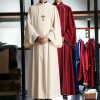
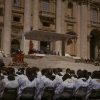

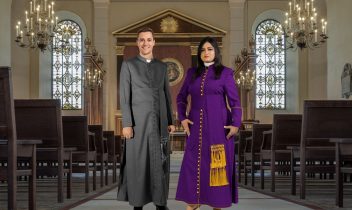

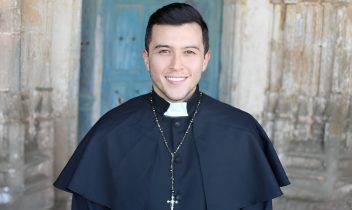
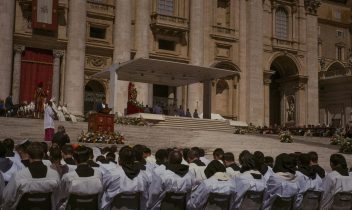
Recent Comments